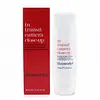What's inside
What's inside
 Key Ingredients
Key Ingredients

 Benefits
Benefits

 Concerns
Concerns

 Ingredients Side-by-side
Ingredients Side-by-side

Water
Skin ConditioningAlcohol
AntimicrobialBambusa Arundinacea Stem Powder
AbrasiveHeptyl Undecylenate
EmollientPropanediol
SolventButylene Glycol
HumectantGlycerin
HumectantSqualane
EmollientSodium Acrylates Crosspolymer-2
AbsorbentPropylene Glycol
HumectantDimethicone
EmollientPolyacrylate Crosspolymer-6
Emulsion StabilisingSilica
AbrasiveHdi/Trimethylol Hexyllactone Crosspolymer
Niacinamide
SmoothingPhenoxyethanol
PreservativePolyurethane-35
Ethylhexylglycerin
Skin ConditioningSodium Phytate
Equisetum Arvense Extract
AstringentTocopherol
AntioxidantZinc PCA
HumectantMaltodextrin
AbsorbentMethylpropanediol
SolventSalvia Officinalis Oil
MaskingCaprylyl Glycol
EmollientSyringa Vulgaris Extract
Skin ConditioningPhenylpropanol
MaskingWater, Alcohol, Bambusa Arundinacea Stem Powder, Heptyl Undecylenate, Propanediol, Butylene Glycol, Glycerin, Squalane, Sodium Acrylates Crosspolymer-2, Propylene Glycol, Dimethicone, Polyacrylate Crosspolymer-6, Silica, Hdi/Trimethylol Hexyllactone Crosspolymer, Niacinamide, Phenoxyethanol, Polyurethane-35, Ethylhexylglycerin, Sodium Phytate, Equisetum Arvense Extract, Tocopherol, Zinc PCA, Maltodextrin, Methylpropanediol, Salvia Officinalis Oil, Caprylyl Glycol, Syringa Vulgaris Extract, Phenylpropanol
Water
Skin ConditioningGlycerin
HumectantCetyl Alcohol
EmollientStearic Acid
CleansingAloe Barbadensis Leaf Extract
EmollientButyrospermum Parkii Butter
Skin ConditioningCaprylic/Capric Triglyceride
MaskingGlyceryl Stearate
EmollientChondrus Crispus Extract
Skin ConditioningArgania Spinosa Kernel Oil
EmollientBorago Officinalis Seed Oil
EmollientCaffeine
Skin ConditioningSodium Hyaluronate
HumectantSorbitan Stearate
EmulsifyingRosa Damascena Flower Oil
MaskingPhenoxyethanol
PreservativeCitrus Aurantium Amara Flower Oil
MaskingDimethicone
EmollientCeteareth-20
CleansingEuphrasia Officinalis Extract
AntimicrobialHydroxypropylcellulose
EmulsifyingBenzyl Alcohol
PerfumingMalva Sylvestris Extract
AstringentTriethanolamine
BufferingPotassium Sorbate
PreservativeAlcohol Denat.
AntimicrobialTocopherol
AntioxidantAchillea Millefolium Extract
CleansingAlchemilla Vulgaris Extract
AstringentAscorbyl Palmitate
AntioxidantAsparagopsis Armata Extract
Skin ProtectingBisabolol
MaskingMelissa Officinalis Leaf Extract
Skin ConditioningMentha Piperita Leaf Extract
Skin ConditioningPhospholipids
Skin ConditioningPrimula Veris Extract
Skin ConditioningRetinyl Palmitate
Skin ConditioningTocopheryl Acetate
AntioxidantVeronica Officinalis Extract
Skin ConditioningCI 77891
Cosmetic ColorantMica
Cosmetic ColorantIodopropynyl Butylcarbamate
PreservativeSodium Gluconate
Skin ConditioningSodium Hydroxymethylglycinate
PreservativeChlorphenesin
AntimicrobialWater, Glycerin, Cetyl Alcohol, Stearic Acid, Aloe Barbadensis Leaf Extract, Butyrospermum Parkii Butter, Caprylic/Capric Triglyceride, Glyceryl Stearate, Chondrus Crispus Extract, Argania Spinosa Kernel Oil, Borago Officinalis Seed Oil, Caffeine, Sodium Hyaluronate, Sorbitan Stearate, Rosa Damascena Flower Oil, Phenoxyethanol, Citrus Aurantium Amara Flower Oil, Dimethicone, Ceteareth-20, Euphrasia Officinalis Extract, Hydroxypropylcellulose, Benzyl Alcohol, Malva Sylvestris Extract, Triethanolamine, Potassium Sorbate, Alcohol Denat., Tocopherol, Achillea Millefolium Extract, Alchemilla Vulgaris Extract, Ascorbyl Palmitate, Asparagopsis Armata Extract, Bisabolol, Melissa Officinalis Leaf Extract, Mentha Piperita Leaf Extract, Phospholipids, Primula Veris Extract, Retinyl Palmitate, Tocopheryl Acetate, Veronica Officinalis Extract, CI 77891, Mica, Iodopropynyl Butylcarbamate, Sodium Gluconate, Sodium Hydroxymethylglycinate, Chlorphenesin
Ingredients Explained
These ingredients are found in both products.
Ingredients higher up in an ingredient list are typically present in a larger amount.
Dimethicone is a type of synthetic silicone created from natural materials such as quartz.
What it does:
Dimethicone comes in different viscosities:
Depending on the viscosity, dimethicone has different properties.
Ingredients lists don't always show which type is used, so we recommend reaching out to the brand if you have questions about the viscosity.
This ingredient is unlikely to cause irritation because it does not get absorbed into skin. However, people with silicone allergies should be careful about using this ingredient.
Note: Dimethicone may contribute to pilling. This is because it is not oil or water soluble, so pilling may occur when layered with products. When mixed with heavy oils in a formula, the outcome is also quite greasy.
Learn more about DimethiconeGlycerin is already naturally found in your skin. It helps moisturize and protect your skin.
A study from 2016 found glycerin to be more effective as a humectant than AHAs and hyaluronic acid.
As a humectant, it helps the skin stay hydrated by pulling moisture to your skin. The low molecular weight of glycerin allows it to pull moisture into the deeper layers of your skin.
Hydrated skin improves your skin barrier; Your skin barrier helps protect against irritants and bacteria.
Glycerin has also been found to have antimicrobial and antiviral properties. Due to these properties, glycerin is often used in wound and burn treatments.
In cosmetics, glycerin is usually derived from plants such as soybean or palm. However, it can also be sourced from animals, such as tallow or animal fat.
This ingredient is organic, colorless, odorless, and non-toxic.
Glycerin is the name for this ingredient in American English. British English uses Glycerol/Glycerine.
Learn more about GlycerinPhenoxyethanol is a preservative that has germicide, antimicrobial, and aromatic properties. Studies show that phenoxyethanol can prevent microbial growth. By itself, it has a scent that is similar to that of a rose.
It's often used in formulations along with Caprylyl Glycol to preserve the shelf life of products.
Tocopherol (also known as Vitamin E) is a common antioxidant used to help protect the skin from free-radicals and strengthen the skin barrier. It's also fat soluble - this means our skin is great at absorbing it.
Vitamin E also helps keep your natural skin lipids healthy. Your lipid skin barrier naturally consists of lipids, ceramides, and fatty acids. Vitamin E offers extra protection for your skin’s lipid barrier, keeping your skin healthy and nourished.
Another benefit is a bit of UV protection. Vitamin E helps reduce the damage caused by UVB rays. (It should not replace your sunscreen). Combining it with Vitamin C can decrease sunburned cells and hyperpigmentation after UV exposure.
You might have noticed Vitamin E + C often paired together. This is because it is great at stabilizing Vitamin C. Using the two together helps increase the effectiveness of both ingredients.
There are often claims that Vitamin E can reduce/prevent scarring, but these claims haven't been confirmed by scientific research.
Learn more about TocopherolWater. It's the most common cosmetic ingredient of all. You'll usually see it at the top of ingredient lists, meaning that it makes up the largest part of the product.
So why is it so popular? Water most often acts as a solvent - this means that it helps dissolve other ingredients into the formulation.
You'll also recognize water as that liquid we all need to stay alive. If you see this, drink a glass of water. Stay hydrated!
Learn more about Water